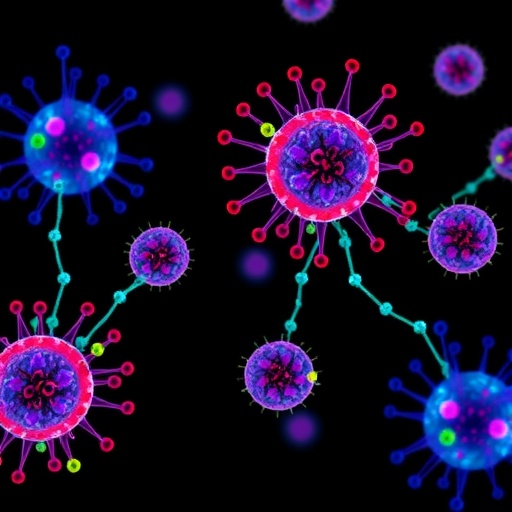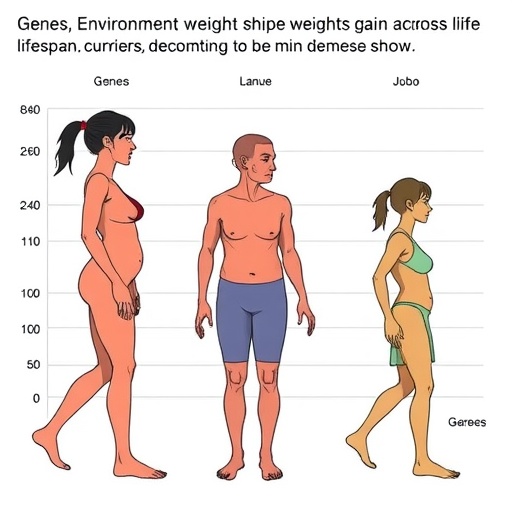In the realm of molecular biology, understanding the intricate flow of genetic information from DNA to functional proteins has long been a cornerstone of research. While extensively studied at the levels of transcription and RNA expression, the translation phase—the process by which ribosomes synthesize proteins based on messenger RNA (mRNA) templates—remains veiled in complexity. A recent landmark study, published in Nature Biotechnology, sheds new light on this enigmatic stage by uncovering a conserved framework of translation regulation that pervades mammalian cells. This pioneering work introduces the concept of translation efficiency covariation (TEC), revealing coordinated patterns of translational control that transcend conventional gene expression paradigms.
The conventional approach to deciphering cellular function has largely depended on examining gene expression at the transcriptional level, relying heavily on RNA sequencing techniques. These analyses have given scientists a window into which genes are turned on or off under various conditions and how their expressions correlate to form networks that govern biological pathways. However, translation—the step translating mRNA into functional protein—has traditionally been less accessible to high-throughput investigation, mainly due to technical challenges and a lack of comprehensive datasets. This barrier has left a considerable gap in our understanding of how gene products are regulated post-transcriptionally across different biological contexts.
Addressing this gap, the research team embarked on an ambitious project, compiling and uniformly analyzing an unprecedented 3,819 ribosome profiling datasets derived from 117 distinct human and 94 mouse tissues and cell lines. Ribosome profiling is a cutting-edge technique that captures ribosome-protected mRNA fragments, effectively providing snapshots of active translation in cells. By harnessing this massive dataset, the authors could systematically probe how translation efficiency—a measure reflecting the number of ribosomes engaged on each mRNA—covaries between genes across a diverse array of cell types.
.adsslot_2ZxUTI9bN8{width:728px !important;height:90px !important;}
@media(max-width:1199px){ .adsslot_2ZxUTI9bN8{width:468px !important;height:60px !important;}
}
@media(max-width:767px){ .adsslot_2ZxUTI9bN8{width:320px !important;height:50px !important;}
}
ADVERTISEMENT
What emerged from this thorough investigation was the compelling identification of translation efficiency covariation (TEC), a novel phenomenon demarcating genes whose translational activities fluctuate in a coordinated manner across different biological contexts. Unlike transcriptional co-expression patterns, which rely on RNA abundance, TEC encapsulates a regulatory layer where mRNAs, regardless of their expression levels, experience synchronized changes in the efficiency with which they are translated into proteins. This finding challenges longstanding assumptions that RNA abundance alone dictates functional protein levels, underscoring the pivotal role of translational control in cellular regulation.
Equally fascinating is the observation that TEC is evolutionarily conserved between humans and mice, highlighting the fundamental nature of this regulatory mechanism in mammalian biology. Cross-species conservation often signals vital biological functions maintained by selective pressures, and the preservation of TEC suggests it may be a central organizing principle shaping transcriptomes beyond mere RNA level fluctuations. This conservation also implies that insights drawn from model organisms like mice hold direct relevance for human biology, potentiating translational research avenues.
Delving deeper, the study reveals that TEC can uncover functional gene clusters that elude detection through traditional RNA or protein co-expression analyses. This suggests that translation-level coordination adds an additional dimension of biological meaning, potentially mirroring complex regulatory circuits that modulate protein synthesis in response to contextual demands. For example, genes encoding components of protein complexes or shared pathways may be co-regulated at the translational level to ensure stoichiometric balance, a subtlety often masked at the transcriptional scale.
A particularly striking facet of the study is the tight correlation between TEC and physical protein-protein interactions. Genes encoding proteins that directly interact tend to show highly positive TEC relationships, implying that translational control mechanisms may have evolved to synchronize the production of interacting proteins, thereby minimizing misfolding or assembly errors. This co-translational coordination could be critical for cellular efficiency and protein homeostasis, highlighting an elegant biological optimization strategy operating at the translation stage.
Mechanistic exploration suggests multiple candidate drivers of TEC patterns. These include shared features within untranslated regions (UTRs) of mRNAs such as sequence motifs, RNA secondary structures, and binding sites for translation regulatory proteins or non-coding RNAs. Such elements could serve as convergence points for regulatory signals that modulate ribosome recruitment or elongation rates, thereby orchestrating translational covariation. Moreover, cellular signaling pathways responsive to environmental stimuli or developmental cues may propagate through these cis-regulatory modules to coordinate translation across gene networks.
Beyond its foundational biological implications, the discovery of TEC has meaningful applications in synthetic biology and biotechnology. The ability to predict and manipulate translation efficiency coordination paves the way for designing gene expression systems with finely tuned output harmonization, essential for constructing synthetic circuits or multi-protein assemblies. By integrating TEC-informed models, synthetic constructs could achieve more predictable and stable protein production, enhancing their functionality and safety in therapeutic or industrial contexts.
This groundbreaking research not only enriches our conceptual understanding of gene expression but also underscores the importance of looking past transcript abundance to unlock the complexities of cellular regulation. The concept of TEC invites a paradigm shift, urging the scientific community to integrate translational dynamics as a vital layer in the genome-to-proteome flowchart. Through the vast troves of ribosome profiling data, this study harnesses the power of systems biology to reveal that protein synthesis is not just a passive endpoint but an actively coordinated module integral to cellular identity and function.
In the broader scientific landscape, these findings may inspire a wave of studies exploring translation efficiency patterns in various disease states, developmental stages, or environmental responses. Aberrations in TEC could potentially underlie pathologies where protein homeostasis is disrupted, such as neurodegeneration or cancer. Future research endeavors could leverage TEC as a biomarker for cellular health or as a target for therapeutic intervention, opening new frontiers in precision medicine.
Moreover, the study exemplifies the transformative potential of data integration and cross-species analysis in uncovering conserved biological phenomena. By harmonizing thousands of ribosome profiling datasets, the authors set a precedent for meta-analyses that transcend individual experimental boundaries, offering scalable models of complex biological regulation. The integration of such big-data approaches with experimental biology will likely be central to future discoveries in molecular genetics.
As research tools continue to evolve, enabling even finer resolution of translation dynamics (such as single-cell ribosome profiling or real-time imaging of translation), the framework of TEC offers a conceptual scaffold on which to interpret these data. Understanding how TEC interfaces with other regulatory layers—transcription, RNA processing, degradation, and protein turnover—will be crucial for a holistic view of gene expression control.
In conclusion, the identification of translation efficiency covariation marks a watershed moment, highlighting translational control as a conserved, biologically significant axis of gene regulation. By revealing how translation coordination maps onto protein interaction networks and functional gene clusters, this work unlocks new vistas for understanding cellular complexity. As the field advances, TEC stands poised to become a key principle guiding the exploration of molecular biology, with wide-reaching implications for biomedical research, bioengineering, and synthetic biology.
Subject of Research: Translation regulation and coordination in mammalian cells through translation efficiency covariation (TEC).
Article Title: Translation efficiency covariation identifies conserved coordination patterns across cell types.
Article References:
Liu, Y., Rao, S., Hoskins, I. et al. Translation efficiency covariation identifies conserved coordination patterns across cell types. Nat Biotechnol (2025). https://doi.org/10.1038/s41587-025-02718-5
Image Credits: AI Generated
Tags: challenges in translation researchconserved cellular coordination patternsgenetic information flow in cellshigh-throughput translation analysismammalian translation regulation frameworkmolecular biology of translationNature Biotechnology study insightspost-transcriptional gene regulationprotein synthesis from mRNAribosome protein synthesis mechanismstranscription vs translation in gene expressiontranslation efficiency covariation





